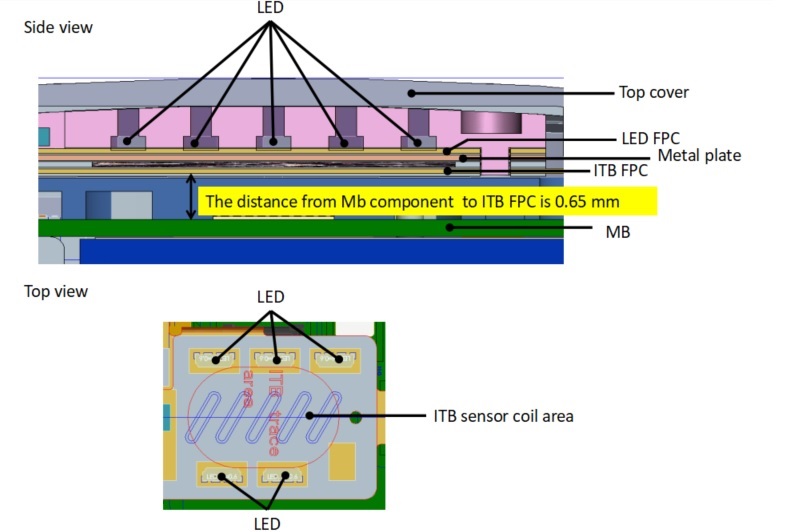Hi Kristin
If the LED is placed on the surface of the LED FPC , and the target metal is pasted on the back. ITB FPC is a coil .
1. Does the LED FPC affect the mechanical response of the button?
2.The distance from MB component to ITB FPC is 0.65 mm , and no ferrite sheet between the two , Are there any risks with this design ?
Thank you .


